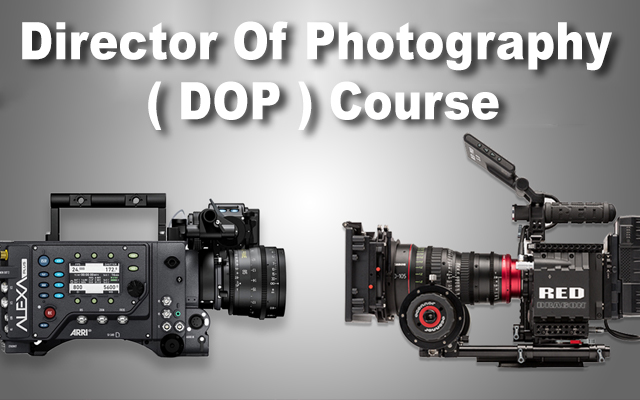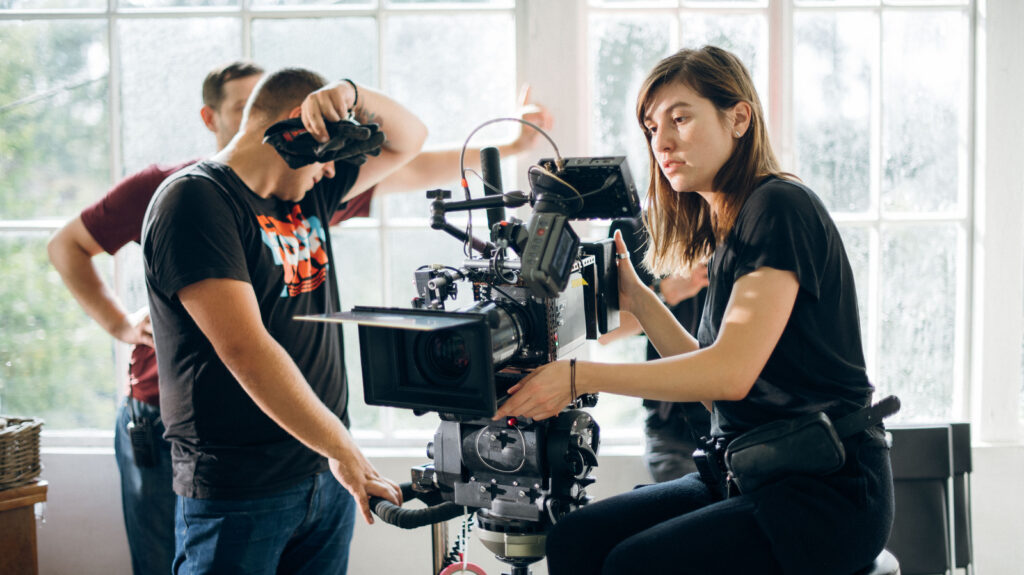
The terms “Director of Photography” (DP) and “Cinematographer” are often used interchangeably, but they can have subtle differences depending on the context. The Director of Photography is primarily responsible for the overall visual look and feel of a film or television production. This role involves overseeing the camera crew, lighting, and other technical aspects of the film’s visual composition. The DP works closely with the director to create the desired aesthetic and mood for the project. They make decisions about the use of lenses, camera angles, and lighting setups to enhance the storytelling. On the other hand, the Cinematographer is typically the person who operates the camera and executes the vision of the Director of Photography. In many cases, the cinematographer and DP are the same person, but in larger productions, they might be different. The cinematographer focuses on capturing the images on film or digitally, ensuring that every shot aligns with the creative goals set by the director and DP. In essence, while both roles are closely linked and often overlap, the Director of Photography oversees the visual elements on a larger scale, while the Cinematographer focuses more on the technical execution of those elements.

Becoming a Director of Photography (DP) involves a combination of education, practical experience, and developing a creative eye. To start, many aspiring DPs pursue a degree or coursework in film production, cinematography, or a related field. This provides foundational knowledge in lighting, camera work, and film theory. Next, gaining hands-on experience is crucial. Working as a camera assistant, grip, or lighting technician on sets helps develop technical skills while learning how films are shot and lit. Aspiring DPs should build a strong portfolio showcasing their work, whether through independent projects, short films, or collaborations with filmmakers.


I’m a movie nerd; one of those people who will often sit through the end credits. As such, I stumbled upon something I found (and I’m sure others do too) rather curious. In some films, I would see a credit for a Cinematographer and in other films for a Director of Photography. Even as someone who has worked in the video production world for decades, this got me thinking: What’s the difference? When I started down this rabbit hole, I realized there were two more titles that often get thrown into the mix: videographer and camera operator. Naturally, all of these seemingly similar titles can be confusing, especially when you’re trying to budget accordingly for a marketing or corporate video. To those outside the video production industry, it would appear there are four titles for the same job. And they would be half right. Here at VMG Studios, we have our own Director of Photography and we’ll bring in freelance camera operators on larger productions when needed. Still confused? Let’s break down each role to get more clarity.

What Is a Videographer?
A videographer is often a one-man, or one-woman band, meaning they work individually. They are primarily used to covering events like weddings, interviews, conferences, or news stories. Generally speaking, they’re more known to “capture” footage than create imagery. Does that mean videographers are less skilled than cinematographers? Not necessarily. There are many videographers who are talented filmmakers. A lot of it comes down to where the shoot is happening and how many people are working on set. If the shoot is at a space where the primary occurrence is not the video shoot (i.e., the event is the primary, the shoot is the secondary), that would fall under videography. If the shoot is in a studio or on a location where the shoot is the only thing that is happening, that would likely fall more under cinematography.

What Is a Camera Operator?
A camera operator is just as the name suggests: this person runs the camera but is not responsible for the creative choices such as lighting and framing. Their job is to capture the image requested by the director, cinematographer, or director of photography (DP) and keep it in focus.
For a live event, say a sporting event, they might be able to take a little initiative in how they shoot, but for a scripted narrative, they do not get to take liberties. This is where the cinematographer or DP comes into play.
GRIL
BOY
A Director of Photography (DP), often known as a cinematographer, is responsible for the visual aspects of a film or television production. They collaborate with the director to determine the look, lighting, and camera angles, ensuring the story is visually engaging. Their role is essential in setting the mood and atmosphere.

A Director of Photography (DoP) is responsible for the visual aspects of a film, including lighting, camera work, and shot composition. They collaborate closely with the director to bring the story’s mood and style to life, ensuring the cinematography enhances the narrative and audience experience.


Leave a Reply